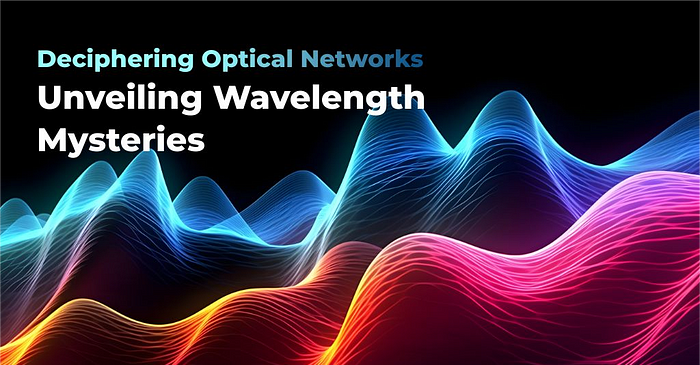Optical wavelengths are fundamental to efficient data transmission, boosting network capacity and ensuring compatibility across components. Understanding these wavelengths allows us to optimize networks, streamline data flow, and meet the evolving demands of high-end AI applications in data centers. Today, let’s decode the optical network, revealing the mysteries of wavelengths
The evolution of fiber optic communication has seen continual advancements. Initially, the 850nm band was discovered as the earliest usable wavelength for optical communication, mainly employed in multi-mode fiber optic setups for shorter distances, fitting well within applications like local area networks (LANs) and data center connectivity.
As technology progressed, scientists delved into the realm of the “low-loss wavelength region,” spanning from 1260nm to 1625nm. This particular band of light emerged as the most conducive for efficient transmission within optical fibers.

This low-loss wavelength region ranges from 1260 nm to 1625 nm and is divided into six wavelength bands referred to as the O-, E-, S-, C-, L- and U- bands.
O-band
The O-band, spanning from 1260nm to 1360nm, serves as a wavelength range primarily tailored for short-distance communication needs, notably in settings like local area networks (LANs) and data center connections. Optical signals within the O-band are typically produced by semiconductor lasers, such as DFB lasers, ensuring high transmission rates and minimal transmission loss. These characteristics make it well-suited for applications requiring swift data transmission and broad bandwidth capabilities.
Fiber optic transceivers facilitate the reception and transmission of O-band optical signals, enabling seamless data transfer. Notably, O-band communication boasts minimal dispersion characteristics in optical fibers. This quality diminishes the dispersion effects during signal transmission, thereby enhancing transmission quality and enabling extended distances for data transfer.
Furthermore, O-band fiber optic communication systems can employ optical amplifiers like Erbium-Doped Fiber Amplifiers (EDFAs) to fortify signals and extend transmission ranges, contributing to the overall efficiency and reliability of data transmission within this wavelength range.
E-band
The E-band spans wavelengths from 1360nm to 1460nm and is the least common among six bands, denoting “extended.” Within this band, a distinct irregularity, known as the water peak, causes heightened transmission loss due to hydroxide ion (OH-) absorption between 1370nm and 1410nm. Early optical fiber technology retained impurities like water (OH groups), resulting in high attenuation of E-band light. Advancements in fiber technology, notably ITU-T G.652.D fibers, have minimized E-band transmission attenuation, resolving the water peak issue.
C-band
The C-band spans wavelengths from 1530nm to 1565nm, denoted as “conventional.” It boasts the lowest transmission loss among optical bands, offering significant advantages in long-distance transmission systems. It is commonly used in conjunction with WDM in metropolitan, long-haul, ultra-long-haul, and submarine optical transmission systems, often leveraging EDFA technology. As transmission distances increase and fiber amplifiers replace opto-electronic regenerators, the C-band’s significance grows. The introduction of DWDM (Dense Wavelength Division Multiplexing), allowing multiple signals to share a single fiber, has expanded the applications of the C-band.
Traditionally, the C-band spans from approximately 191.6THz to 195.9THz, covering a spectral range of about 4THz. With a 50GHz spacing, this traditional C-band can support 80 channels, known as the C80 band.
The CE-band extends slightly beyond the C80 band, covering wavelengths from 1529.16nm to 1567.14nm, with an approximate usable spectrum of 4.8THz. At 50GHz spacing, the CE-band can support 96 channels, termed the C96 band. Compared to the C80 band, the C96 band offers a 20% increase in transmission capacity.
The C++ band, an extension of the C96 band, covers wavelengths from 1524nm to 1572nm, with an approximate usable range of 6THz, accommodating up to 120 channels. Hence, it’s also known as the C120 band (or Super C Band). The C++ band provides a 50% increase in transmission capacity compared to the C80 band.

L-band
The L-band spans wavelengths from 1565nm to 1625nm, denoted as “long-wavelength.” It’s the second-lowest in terms of transmission loss among optical bands. When the bandwidth demand surpasses what the C-band can accommodate, the L-band is used as a supplementary option for optical networks.
U-band
U-band spans wavelengths from 1625nm to 1675nm, denoted as “ultra-long-wavelength.” Primarily, the U-band is utilized for network monitoring purposes.





